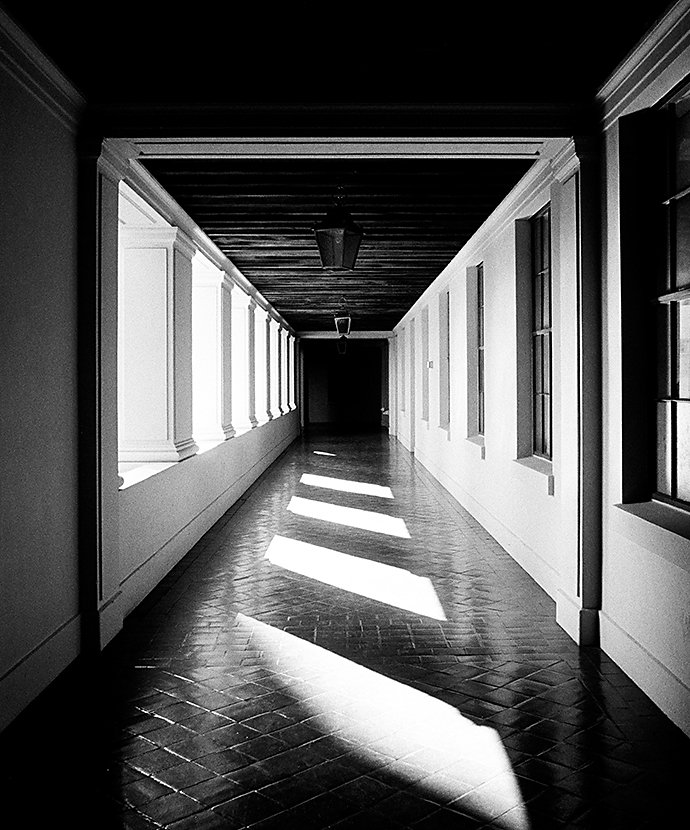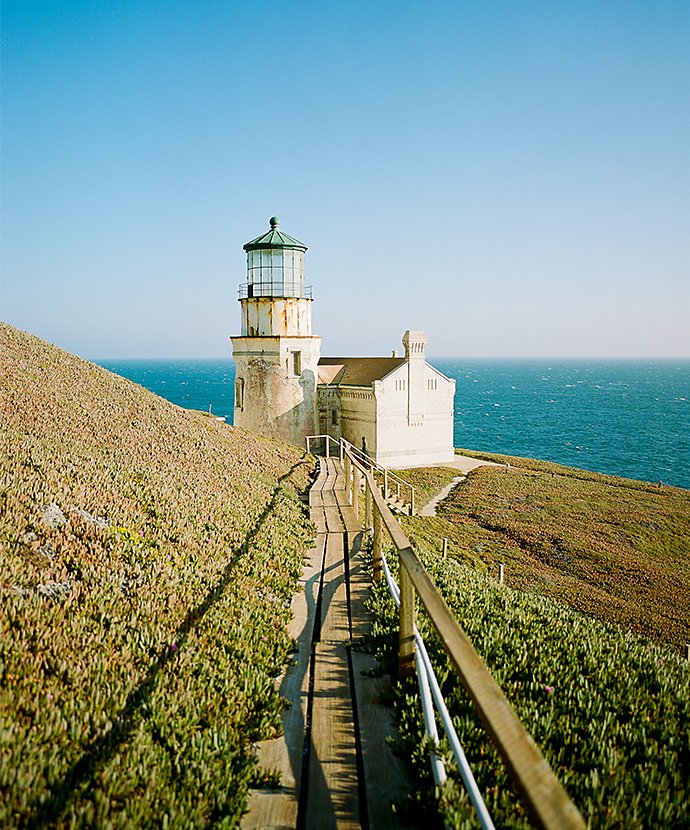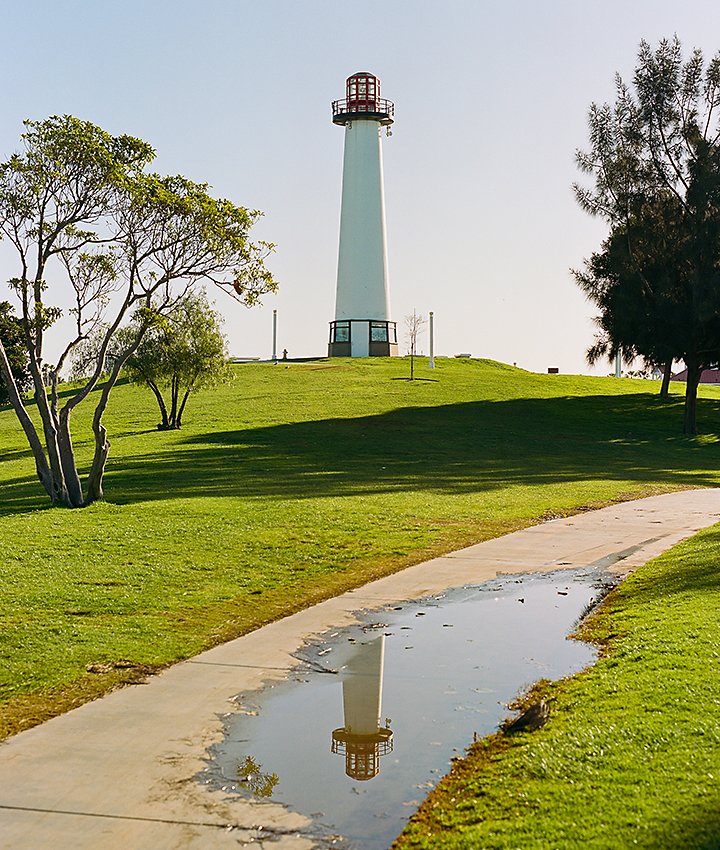Play with perspective photography.
A unique point of view or compelling composition can take a photo from decent to amazing. Get expert photography tips on how to create photos that shed new light on familiar scenes.

Images by David Rose
Put perspective photography into perspective.
Perspective in photography refers to the spatial relationship between subjects in the frame. It also suggests that the way you compose your image helps your viewer see the world from a new perspective — yours.
“It’s the difference between a really good photo that you want to look at and something that’s bland or flat,” says photographer David Rose. Be prepared to move around and work the scene to find your shot — compelling perspectives are rarely found at eye level. Try leading lines, forced perspective, low angles, or a bird’s-eye view to tell your story in a way that communicates your unique point of view.


Images by David Rose
The purpose of using perspective in photography.
“You use perspective to create a sense of depth in an image,” says Rose. “A camera takes the three-dimensional world and reproduces it on a two-dimensional plane. So perspective allows you to create the illusion of depth within that two-dimensional scene.”
Perspective not only makes a photo more interesting, but it also allows you to challenge how people view the world by letting them see it through your lens. With a trained eye, you can even take unique photos of commonly photographed places.
“Perspective in photography is like what prose and poetry are in language,” says Rose. “You can read a sentence that’s technically correct and gets the point across, but it doesn’t really captivate you. You can take a serviceable picture of something, but if you can capture an interesting perspective of it, you can really draw the viewer in.”

Image by Dan Tom
How to create perspective in your photos.
Good photos start with good ideas, so before you press the shutter, think about what you’re trying to capture. Take in the scene and note what is in the foreground, middle ground, and background. Once you know what elements you have to work with, you can position yourself to include the items you want in your photo and exclude those that don’t contribute to the story.
Decide on a clear focal point. “This directs your viewer’s eyes exactly where you want them to end up,” says Rose. Then, the key part — switch up your vantage point. Move the camera up and down or side to side. Create an enlarged foreground by photographing at ground level, or look for objects that can help frame your image. Play with depth of field (the distance between the nearest and farthest objects) or discover how different angles bring out geometric shapes.
There’s no right or wrong way to approach perspective photos, and that’s part of the fun. No matter what you do, don’t settle for the first shot that jumps out at you. Listen to your instincts, but remember to slow down and explore the scene, so you can discover compositions that might be hiding in plain sight. “I take dozens of shots of the same scene,” says photographer Dan Tom. “Then in post-production, I go back and pick out my favorite.”

Image by David Rose
Types of perspective.
There are three basic types of perspective in photography. “Perspective can be visual (or linear), physical, or conceptual,” says Tom. “For me, it comes down to composition and the components that I choose to include in the frame. Those all impact the final photo and the story you’re trying to tell.”
Geometric perspective
Leading lines are one of the most popular visual techniques artists use to compose scenes. These are parallel lines that, when viewed at a distance, appear to converge and lead to a vanishing point. These linear shapes help naturally direct the viewer’s eye through the photo. Strong geometric shapes can give structure to your photo, so look for other shapes besides lines that can pull the viewer into the scene.
Physical perspective
Physical perspective plays with distance in order to convey the proportions or physical qualities of a subject. One popular method is to place a figure in a landscape shot to give a sense of scale. Other factors you can emphasize include height, length, color, texture, contrast, highlights, and shadow.
Conceptual perspective
Conceptual perspective is all about how you see the world. “One of the most beautiful things about photography is that your perspective is the most important — you have something that no one else can bring to the table,” says Tom. Photos can persuade, inspire, or simply reveal a piece of the world through your eyes. And the best part is that it’s up to you to decide what you want to say with your photo and how you choose to say it.

Tips to keep your compositions fresh.
Try out different lenses.
Focal length has a huge impact on how your photos turn out. Wide-angle lenses or fish-eye lenses can capture sweeping scenes in their entirety, while a telephoto lens can compress an image and make the background appear larger. If you want a way to quickly transform a scene, switch out your lens and see it from a different perspective immediately.
Experiment with forced perspective.
The forced perspective photography technique is an optical illusion that challenges your sense of scale by distorting the relative size of objects. If you’ve ever seen a photo in which someone appears to hold up the Leaning Tower of Pisa or stand side by side with the Eiffel Tower, you’ve seen forced perspective at work. To do this in your photos, place large objects in the background and small objects in the foreground and watch as the relative distance of these objects plays tricks on your eyes.
Start with a prime lens.
A prime lens is one that has a fixed focal length. The lack of zoom will force you to move around rather than simply relying on the lens to work for you. If you’re used to zoom lenses, having only one focal length to work with can be a bit of an adjustment. But prime lenses also eliminate the need to choose a focal length. You might even find that the simplicity of a prime lens keeps you in the creative zone and makes you a more deliberate photographer.
Correct perspective in post with Adobe.
Use Adobe Photoshop or Photoshop Lightroom to correct perspective in your photos. If you photograph architecture, you might find that tall buildings and objects with straight lines tend to get distorted. You can use the Perspective Warp tool in Photoshop to restore parallel lines, or the Geometry panel in Lightroom to correct perspective automatically.
You also communicate your perspective as a photographer in how you edit. Did you see the scene as a moody black-and-white photo, or did you visualize your image in bright colors with lots of contrast? The choices you make as you edit can bring your photographic vision to life, and they can be a fun part of the photography process itself, so don’t skimp on post-production.

Image by David Rose
Find a new frame of reference.
Perspective, whether visual or conceptual, is a skill you get better at over time. Remember that it’s not so much about what you see but how you see it, and it takes repeated practice to get into the habit of photographing the world through your unique lens.
Whether you’re just getting started or this is your thousandth photoshoot, don’t put pressure on yourself to capture any one shot or one perspective. Be open to moments and opportunities as they come, and take risks. Pay attention to what you’re naturally drawn to, and soon enough you’ll start to find your own unique style and perspective.
Contributors
Do more with Adobe Photoshop Lightroom.
Edit photos easily with Lightroom presets, Super Resolution, easily share photos from any device, and access your projects anywhere with cloud photo storage management.
You might also be interested in…
Crafting narratives with street photography.
Embrace this form of candid storytelling and start capturing snapshots of everyday life.
An introduction to portrait lighting.
Learn the basics of portrait lighting to bring your subject’s story to life.
Architecture photography, inside and out.
Learn basics tips for photographing the interiors and exteriors of buildings big and small.
Go places with travel photography.
Make the most of your travel photos with these tips from professional travel photographers.



